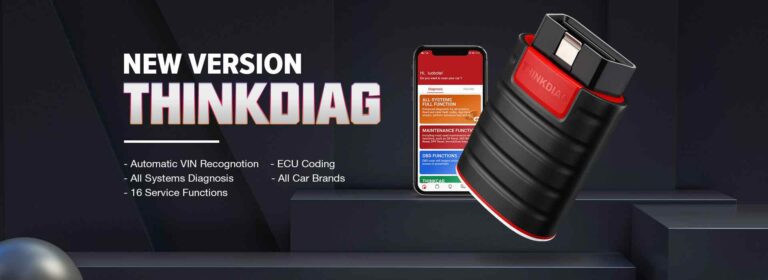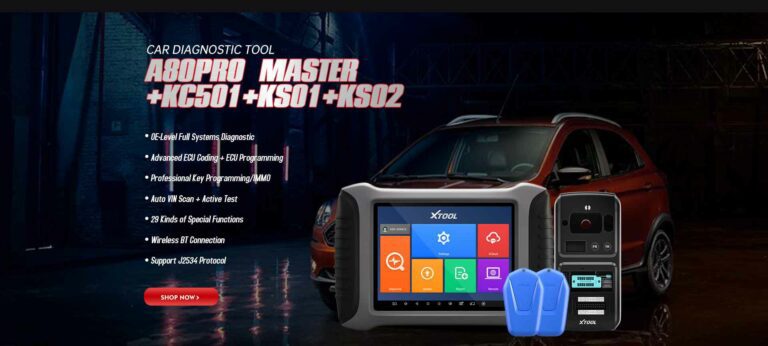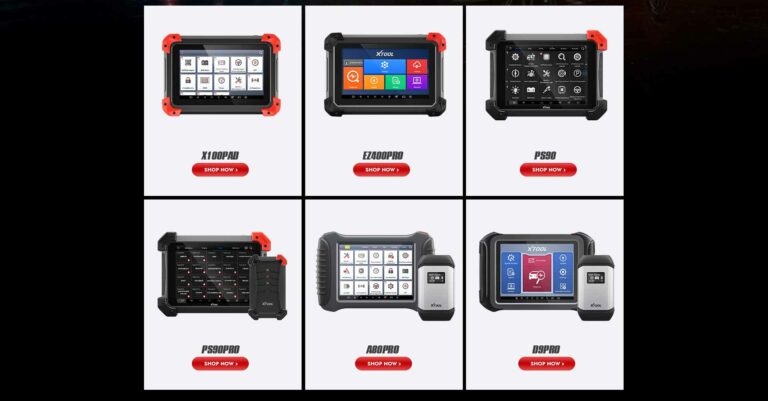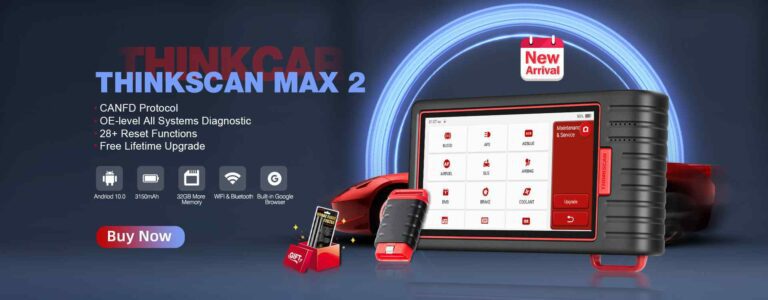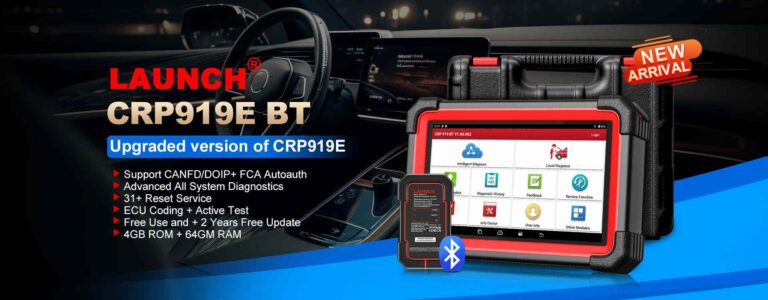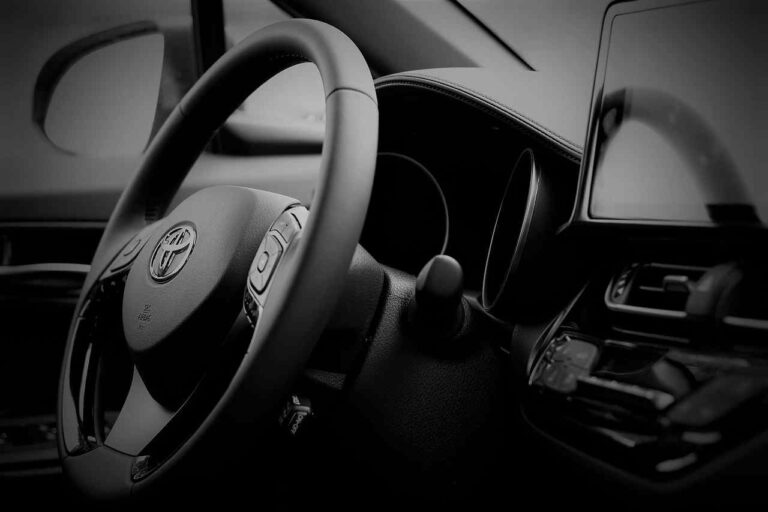Discover the types of OBD2 scanners. Find the perfect type for your car and stay informed about its health and potential issues.
OBD2 scanners have become essential tools for vehicle diagnostics, allowing car owners and mechanics to access vital information about a vehicle’s performance and health.
Various types of OBD2 scanners are available in the market, each catering to different user requirements.
This article will explore the different types of OBD2 scanners and their features to help you understand which one best suits your needs.
TYPES OF OBD2 SCANNERS
BASIC CODE READERS

Basic code readers are the most straightforward type of OBD2 scanners. They provide basic diagnostic functions and are suitable for casual users who only require the ability to read and clear diagnostic trouble codes (DTCs).
While lacking the advanced features of other scanners, basic code readers are effective for identifying and resolving common issues.
Suggested Reading: BLUETOOTH OBD2 SCANNER | HOW TO USE AN OBD2 SCANNER
Definition and Functionality
Basic code readers are entry-level scanners that retrieve and display DTCs from a vehicle’s onboard computer. They offer a basic diagnostic capability, allowing users to identify the source of a check engine light and clear the codes.
SHOP CAR CODE READERS ON ALIEXPRESS
Features of Basic Code Readers
Reading and Clearing Diagnostic Trouble Codes (DTCs)
Basic code readers excel at reading and clearing DTCs, allowing users to determine the specific issues triggering the check engine light.
Limited Diagnostic Functions
Unlike more advanced scanners, basic code readers have limited diagnostic capabilities and may not provide live data stream, freeze frame data, or vehicle information.
Pros and Cons of Basic Code Readers
Pros
Affordable and budget-friendly option
Simple and easy to use
Effective for basic troubleshooting
Cons
Limited diagnostic capabilities
Lack of advanced features for in-depth analysis
It may not be compatible with all vehicle models
DIY SCANNERS

DIY (Do-It-Yourself) scanners offer a step up from basic code readers, providing more comprehensive diagnostic functions. These scanners suit car enthusiasts and DIYers who want to delve deeper into their vehicle’s diagnostics.
Definition and Functionality
DIY scanners offer enhanced diagnostic capabilities beyond basic code readers. They provide users with additional features to analyze and interpret data, facilitating a more detailed understanding of their vehicle’s condition.
SHOP DIY SCANNERS ON ALIEXPRESS
Features of DIY Scanners
Enhanced Diagnostic Functions
DIY scanners offer a wider range of diagnostic functions than basic code readers. These functions may include retrieving and clearing DTCs, displaying live data streams, and providing access to freeze-frame data.
Live Data Stream
DIY scanners allow users to view real-time data from various sensors and components, enabling them to monitor critical parameters and identify performance issues.
Freeze Frame Data
With freeze frame data, DIY scanners capture a snapshot of vehicle parameters when a DTC is triggered. This information assists in diagnosing intermittent issues and provides valuable context for troubleshooting.
Vehicle Information
DIY scanners can provide users with details about their vehicle, such as VIN (Vehicle Identification Number), vehicle specifications, and emissions-related information.
Pros and Cons of DIY Scanners
Pros
More comprehensive diagnostic capabilities
Access to live data stream for real-time analysis
Freeze frame data aids in troubleshooting intermittent issues
Cons
May not offer advanced features available in professional-grade scanners
Higher price range compared to basic code readers
Some models may have compatibility limitations
PROFESSIONAL-GRADE SCANNERS

Professional-grade scanners are designed for mechanics and automotive professionals who require in-depth diagnostic capabilities and access to advanced features. These scanners provide comprehensive analysis and are suitable for diagnosing complex issues.
Definition and Functionality
Professional-grade scanners offer extensive diagnostic capabilities, surpassing the functions provided by basic code readers and DIY scanners. They are designed to handle complex repairs, making them indispensable tools for professionals in the automotive industry.
SHOP PROFESSIONAL OBD2 SCANNERS ON ALIEXPRESS
Features of Professional-Grade Scanners
Extensive Diagnostic Capabilities
Professional-grade scanners provide various diagnostic functions, allowing users to delve deep into a vehicle’s systems and subsystems. These scanners can retrieve and clear DTCs, perform component testing, and provide detailed information about various vehicle parameters.
Advanced Features
Professional-grade scanners often include advanced features for in-depth analysis. Some examples of these advanced features are:
ABS Diagnostics
Professional-grade scanners can diagnose issues related to the Anti-lock Braking System (ABS), providing detailed information about individual wheel speeds, hydraulic pressure, and ABS module performance.
SRS Diagnostics
These scanners enable the diagnosis of issues with the Supplemental Restraint System (SRS), which includes airbags and seatbelt pre-tensioners. They can identify faulty sensors and control modules and provide crash data retrieval capabilities.
Transmission Diagnostics
Professional-grade scanners can access transmission-specific data, allowing users to diagnose transmission-related problems, monitor fluid temperatures, and view shift patterns.
Pros and Cons of Professional-Grade Scanners
Pros
Extensive diagnostic capabilities
Access to advanced features for specialized analysis
Reliable and accurate results
Cons
Higher price range compared to basic code readers and DIY scanners
It may require specialized knowledge to utilize advanced features effectively
Not necessary for casual users or those with minimal diagnostic needs
SMARTPHONE/TABLET APPS

With technological advancements, smartphones, and tablets can be transformed into powerful OBD2 scanning tools by utilizing dedicated apps. These apps offer convenience and versatility, providing users with on-the-go diagnostics.
Definition and Functionality
Smartphone/tablet apps leverage mobile device’s computing power and connectivity to create a user-friendly interface for OBD2 diagnostics. They wirelessly connect to the vehicle via Bluetooth or Wi-Fi, enabling users to access diagnostic data directly on their mobile devices.
SHOP BLUETOOTH OBD2 SCANNERS ON ALIEXPRESS
Features of Smartphone/Tablet Apps
Wireless Connectivity
Smartphone/tablet apps establish a wireless connection between the mobile device and the vehicle’s OBD2 port, eliminating additional cables or connectors.
User-Friendly Interface
These apps often have intuitive interfaces, making them accessible to users with varying levels of technical knowledge. They provide easy navigation, interactive displays, and user-friendly controls.
Wide Range of Functions
Smartphone/tablet apps can offer various diagnostic functions like DIY scanners. They can read and clear DTCs, display live data streams, provide freeze-frame data, and offer vehicle information.
Pros and Cons of Smartphone/Tablet Apps
Pros
Convenient and portable solution
Utilizes the computing power and connectivity of mobile devices
User-friendly interfaces suitable for beginners
Cons
It relies on the availability of compatible apps and mobile devices
It may have limitations compared to dedicated OBD2 scanners
Potential issues with wireless connectivity stability
Conclusion
Understanding the different types of OBD2 scanners is crucial when choosing the right tool for your vehicle diagnostics.
Basic code readers offer simplicity and affordability, while DIY scanners provide enhanced diagnostic capabilities.
Professional-grade scanners cater to mechanics and professionals with comprehensive diagnostic functions and advanced features.
Smartphone/tablet apps leverage the power of mobile devices for convenient and portable scanning.
Consider your specific needs, budget, and level of expertise when selecting the most suitable type of OBD2 scanner.
You can effectively diagnose and maintain your vehicle with the right scanner, ensuring optimal performance and reliability.

